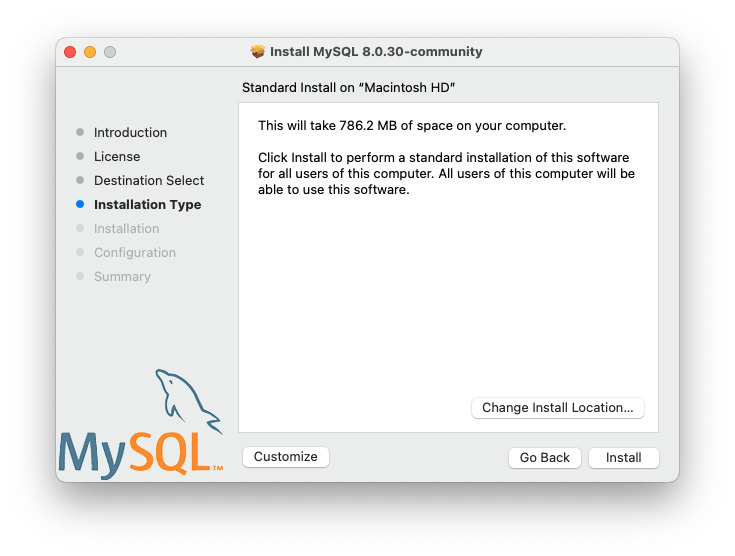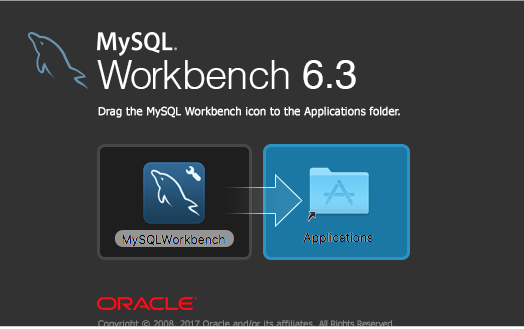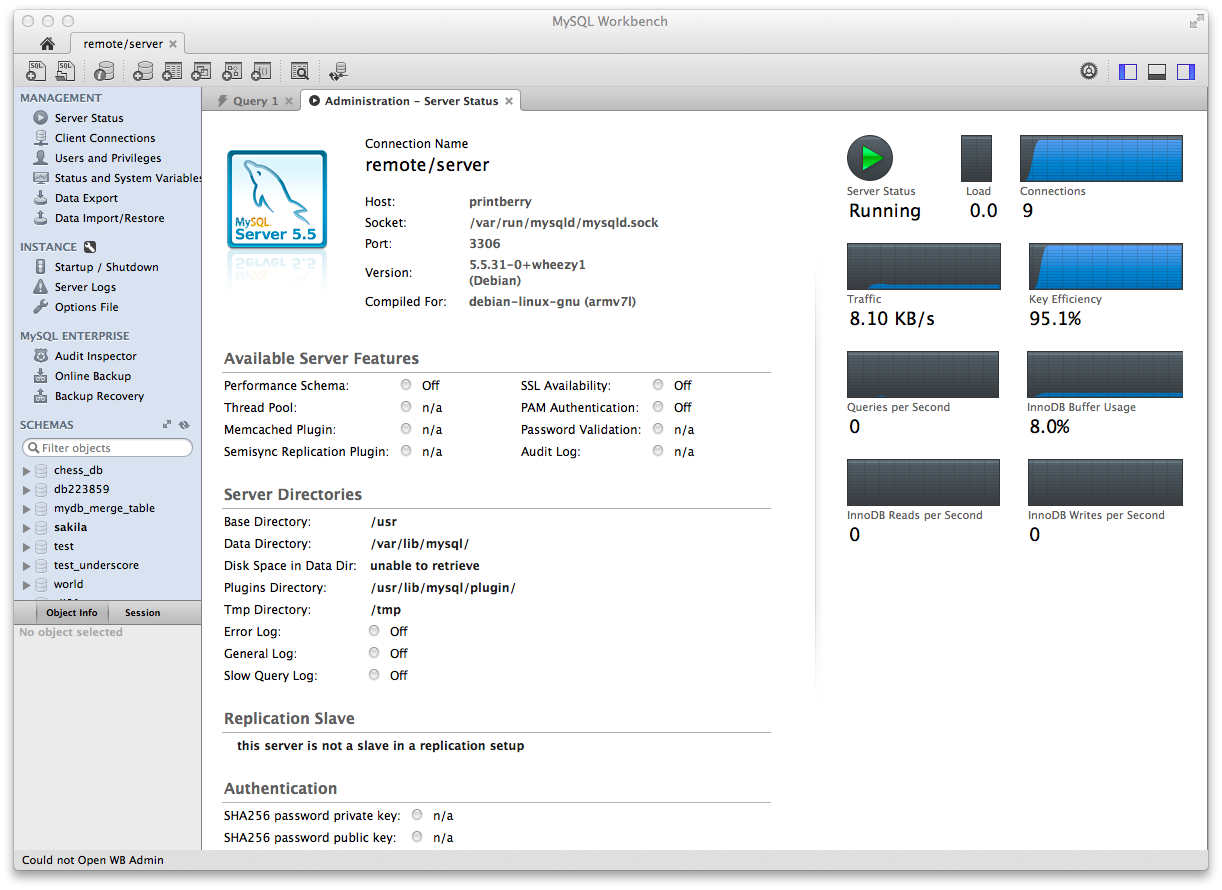Mysql Mac Os X Download
Mysql 5.6 Download Mac; Mysql Mac Os Download; Mysql Client For Mac Os; Download Mac OS X 10.5.6 for Mac & read reviews. The Mojave update. Download the disk image (.dmg) file (the community version is available here) that contains the. Mac is a popular OS that keeps coming up with new updates to improve the user experience. MySQL is the most popular open source database management system. It allows you to quickly download and install and run a powerful database system on almost any platform available including Linux, Windows, and Mac OS X etc. Geeks Worldwide. How to Install and Configure MySQL Database Server on macOS Mac OS X mysql server client download setupSierra,MojaveApple macbook proPlease Subscribe my Chan. MySQL is the most popular open source database management system. It allows you to quickly download and install and run a powerful database system on almost any platform available including Linux, Windows, and Mac OS X etc.Mac OSX Lion 10.7.2 DMG Free Download Clean Official Mac Store Release DVD. MySQL Community Edition is a freely downloadable version of the world's most popular open source database that is supported by an active community of open source developers and enthusiasts. MySQL Cluster Community Edition is available as a separate download. The reason for this change is so that MySQL Cluster can provide more frequent updates.
Should I use Native MySQL on MAC instead of XAMPP?
Probably not. XAMPP is a much simpler, fully integratedpackage which is a fit for the needs of this course. You can, however,substitute actual MySQL for the MariaDB used in XAMPP and use theremaining Apache/Php part of XAMPP, or, make separate installations ofthose components.Terminal shell, sudo, nano
It is important to be able to execute certain commands from the Terminal shell.On a MAC, as on other UNIX-like systems, administrative commands are usuallyprefaced by the sudo command:If you've never used sudo, it requests that you enter the password for your computer login on initial usage within each shell.Occasionally you have to edit administrative files and it is often easiest to do so from the shell as well. I would recommend the nano editor as the easiest to use:An alternative is to 'become root' and do the editing directly without the constantsudo qualifier. To do so, run:The hash prompt # indicates that you are root and can do administrativetasks without the sudo qualifier.Prepare for mysql shell usage
After installation, the mysql shell client will be:There are other useful client related client programs, all in the directoryand so it is a good idea to make them easily accessible. What youneed to do is add this directory to the executable PATH by adding thislineinto the 'appropriate' file: ~/.profile .Edit .profile by:In any case, add the one line:Be careful to have no spaces around the equals sign!Then quit this shell and start up another one. Test theeffectiveness of what you've done by typing this in the shell:You should see the /usr/local/mysql/bin component as thefirst component in the PATH variable.
.Edit .profile by:In any case, add the one line:Be careful to have no spaces around the equals sign!Then quit this shell and start up another one. Test theeffectiveness of what you've done by typing this in the shell:You should see the /usr/local/mysql/bin component as thefirst component in the PATH variable.MySQL Installation
This is a free MySQL community edition packageavailable (in other, perhaps later, versions) fordownload from the MySQL home site:| Home: | http://www.mysql.com |
|---|---|
| Download: | http://www.mysql.com/downloads/mysql |
Server Control
As of this recent version of 5.7, running on recent versions of MAC OS X, there is a MySQL Control Panel found in System Preferences.Opening it reveals:It is self-explanatory how to use this, but you can effectively 'turn off'this version of MySQL to avoid competing with, say, the XAMPP installation.Mysql client executable access
As indicated in the above section, add this PATH componentYou can check that the executables are in place by:Initially get in by:Once you're in reset the password (you cannot do anything until you've done so):Don't use your login password! This one is of much lesser importance.Test it:Password-less access
Instead of trying to remember this MySQL root password, create the following convenience filein your home directory(adjust if you have single quotes in your NEW-PASSWORD):Create test database and guest user
Create the user/database we employ in our examples:Verify that you can get in as guest with empty password: The first step in setting up a MySQL database server on your Mac is to download the MySQL installer. MySQL offers a free edition called the MySQL Community Server. Click the link below to be taken to the download page for the MySQL Community Server. In the 'Select Operating System' box, select macOS.
MySQL Community Server Download
Click the Download button next to the first option, the DMG archive download. At the time of this writing, version 8 of the community server is the default download.
Once the DMG file is downloaded, double-click the DMG file to open the disk image. Once the disk image is opened, a new Finder window will appear with a .pkg file named something like the following:
mysql-X.X.XX-macos10.XX-x64_64.pkgTo install MySQL, do the following steps:
- 1. Double-click the .pkg file. This will launch the MySQL installer
- 2. Continue with the default options. At one point during the installation, the installer will ask whether to use strong password encryption or legacy password encryption. Some MySQL tools do not yet support strong password encryption. If the tools you are using to connect to MySQL do not support strong password encryption, select the legacy password encryption option. Note that RazorSQL supports strong password encryption.
- 3. Make sure to enter a password for the root MySQL user when prompted, and select the 'Start MySQL Server once the installation is complete' option as well.
When the installer completes your MySQL server will be installed and running on your Mac. Once you have gotten to this point, you have a running MySQL server with one user - the root user - and the default database named mysql. Now it is time to connect to your MySQL database, create a user, and create a database.

To get connected to your MySQL database, you can use a tool like RazorSQL. RazorSQL can be downloaded from the Download link on the header at the top of this page. Once RazorSQL is downloaded and installed, do the following to connect to your MySQL database:
- 1. Select the Connections -> Add Connection Profile menu option
- 2. Select MySQL as the database type and click 'Continue'
- 3. Enter any name you wish for the connection profile name and enter a name for the profile folder if desired
- 4. For the Login, enter root. For the password, enter the root password you gave to the MySQL installer
- 5. For the Host or IP Address, enter localhost
- 6. For the database name, enter mysql
- 7. Click Connect
At this point, you should be connected to your local MySQL database in RazorSQL.
After connecting, you can create a new database by doing the following:
- 1. Select the DB Tools - Create -> Create Database menu option
- 2. Enter a database name and then click 'Generate SQL'
- 3. Click the Execute SQL button to create the database.
If you would like to manually create the MySQL database, execute the following command. This creates a new database named sample with UTF8 support:
create database sample character set 'utf8mb4'Below is a screen shot of the create database window.
After creating the sample database, we can then create a new user. This will allow us to connect to the MySQL database without using the root user.
To create a new user, select the DB Tools -> Create -> Create User menu option. If you installed MySQL version 8, make sure the 'Use MySQL 8 Syntax' box is selected.
If you want the user to be able to access your MySQL instance from other machines, make sure to check the 'All Domains' option, or else click the 'Select Domains' button to add specific ip addresses / hosts.

You will need to give the new user access to the sample database. To do this, either click the 'Select Databases' button and add the sample database, or click the 'All Databases' box to give the new user access to all databases.
Click the Generate SQL button to preview the commands for creating the user. Click the Execute SQL button to create the user. Below are example commands generated by the create user tool. These can be manually executed to create the user if not using RazorSQL or the create user tool:
Clamav Mac Os X Download
CREATE USER 'testuser'@'localhost' IDENTIFIED BY 'testpass';CREATE USER 'testuser'@'%' IDENTIFIED BY 'testpass';GRANT ALL PRIVILEGES ON *.* TO 'testuser'@'localhost';GRANT ALL PRIVILEGES ON *.* TO 'testuser'@'%';flush privileges; Below is a screen shot of the RazorSQL MySQL Create User tool.
After creating the new user, you can set up a new RazorSQL connection to the database using the new user instead of the root user. Once you are connected with your new user, below are some sample commands to create a new table, insert data into the table, and query data in the table.
CREATE TABLE department ( dnumber INT NOT NULL, dname VARCHAR(25) NOT NULL, PRIMARY KEY (dnumber));insert into department values (1, 'Headquarters');insert into department values (4, 'Administration');insert into department values (5, 'Research');select * from department;Mysql For Mac Os X 10.10 Download
The above commands can be executed manually, or you can use the following tools in RazorSQL to create the table and insert the data using visual tools:
RazorSQL MySQL Create Table Tool
RazorSQL MySQL Table Editor